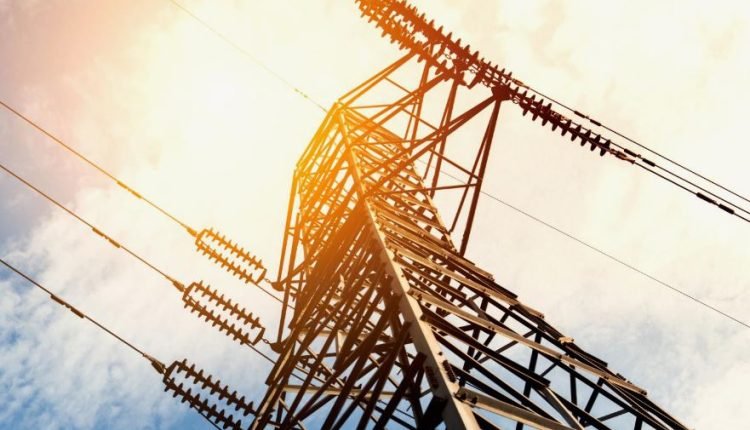J&K Implements Comprehensive Strategy to Ensure 24×7 Power Supply: CM Omar Abdullah
Jammu,17-03-2025: In a major step towards achieving uninterrupted electricity supply, Jammu and Kashmir Chief Minister Omar Abdullah on Monday announced the implementation of a well-coordinated plan that integrates modernization of the power infrastructure and expansion of generation capacity. The initiative aims to provide 24×7 reliable and affordable power to consumers across the Union Territory.
Addressing the legislative assembly in response to a query from BJP legislator Rajiv Jasrotia, Abdullah, who also holds the portfolio of the power ministry, emphasized that the government is taking a holistic approach towards strengthening the power supply chain. The strategy includes significant upgrades in power transmission and distribution systems under various schemes, including the Tariff-Based Competitive Bidding (TBCB) model and the Revamped Distribution Sector Scheme (RDSS). These efforts are targeted for completion by 2027-28.
The chief minister highlighted the rapid progress of several key hydroelectric projects, which are expected to significantly boost the region’s power capacity. Among these, Pakal Dul, Kiru, Kwar, and Ratle projects are on track to contribute over 3,000 MW upon their commissioning by 2027.
Additionally, several upcoming hydroelectric projects, including the 390 MW Kirthai-I, 258 MW Dulhasti-II, 800 MW Bursar, 1,856 MW Sawalkote, 240 MW Uri-I Stage-II, 89 MW Ujh, and 930 MW Kirthai-II, have been planned for completion within the next decade. These projects aim to enhance J&K’s energy security while reducing dependency on power purchases from external sources.
To meet the region’s growing energy demands, Abdullah stated that the government is focusing on creating a balanced energy mix comprising hydro, thermal, and renewable energy sources. This will be achieved through the development of local power generation projects and strategic power purchase agreements with external suppliers.
To ensure effective evacuation of power from new projects and support increasing peak loads, the administration has prioritized upgrading transmission infrastructure. The plan includes adding approximately 2,406 MVA capacity at 220 kV and 132 kV levels through the establishment of new grid substations and the augmentation of existing substations in the Jammu region. In Kashmir, a similar enhancement plan targets the addition of around 2,500 MVA capacity at both voltage levels. Several grid stations will also be modernized under a phased development approach.
Recognizing J&K’s immense solar energy potential, the chief minister reaffirmed the government’s commitment to promoting solar rooftop installations under PM Surya Ghar Muft Bijli Yojana. Efforts are also underway to encourage private sector participation in renewable energy projects, further diversifying the power sector.
Abdullah highlighted that the ongoing installation of smart meters is already yielding results, with low-loss areas experiencing minimal power cuts. The impact is evident in areas where 100 percent smart metering has been completed—45 feeders in Kashmir and 50 feeders in Jammu. The expansion of metering is expected to bring substantial improvements in power supply efficiency.
On the matter of coal-based energy generation, Abdullah acknowledged that progress on the development of the Kudanali-Laburi coal block in Odisha has been slow. The coal block was allocated jointly to the J&K State Power Development Corporation (JKSPDC) and NTPC in July 2013, with JKSPDC receiving a 130 MT share of the total 396 MT geological reserves.
However, NTPC withdrew from the project in 2018, citing difficulties in securing environmental clearances, challenges in site accessibility, and local resistance. Despite J&K’s request in 2019 for an alternate coal block allocation, the Ministry of Coal declined the proposal, citing the absence of provisions under the MMDR Act, 1957, for such a reassignment.
In response to a separate query from NC legislator Mushtaq Ahmad Guroo, Abdullah revealed that a Memorandum of Understanding (MoU) was signed between JKSPDC and NHPC on January 3, 2021, for the execution of three major hydroelectric projects—1,856 MW Sawalkote, 258 MW Dulhasti Stage-II, and 240 MW Uri-I Stage-II. Under this agreement, NHPC will develop and operate these projects under the Build, Own, Operate, and Transfer (BOOT) model for a period of 40 years.
As per the MoU, the J&K government is entitled to receive 12 percent free power, a 1 percent contribution to the Local Area Development Fund (LADF), and the first right of refusal to purchase 50 percent of the generated power at the price determined by the regulator.
With these initiatives, J&K is making significant strides towards energy security and self-sufficiency. The administration’s approach, integrating hydropower expansion, renewable energy promotion, smart metering, and transmission system upgrades, aims to create a robust and sustainable power sector.
The chief minister reaffirmed that the ultimate objective is to ensure round-the-clock electricity supply, boost industrial and economic growth, and improve the quality of life for the residents of Jammu and Kashmir.




